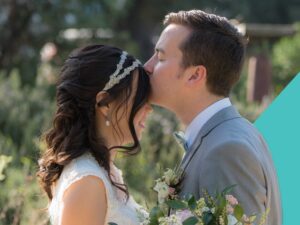Macro Photography & Focus Stacking Made Easy
- Description
- Curriculum
- FAQ
- Reviews
- Grade

Explore the amazing world of Close-up and Macro Photography and Focus Stacking with an internationally published photographer. Learn the techniques and equipment (optical, lighting and support) needed to achieve sharply focused, well-exposed photographs of flowers, insects and much more.
This intensive course will show you how to get the most from your DSLR and mirrorless camera and how to enhance its macro capabilities in very affordable ways. Find out, for instance, how to turn your ordinary lens into a superb macro lens for only a few dollars. Or how to turn your on-board flash into a macro flash for small change.
The course covers every type of close-up shot, all the way to extreme macro, and equipment ranging from macro and reversed lenses to close-up attachments and bellows. It also covers focus stacking techniques (including processing through Photoshop and Helicon Focus) as well as software and equipment for extreme macro.
What Udemy students are saying about this course:
This course had a lot of great tips and instruction on macro photography for a beginner like me. I’ve learned about cameras and other equipment used in macro photography. The instructor has a vast range of knowledge that he presents in an easy to digest manner. I like how the instructor uses DIY equipment as well as equipment that can be purchased. It gives the student options when first starting out with macro photography. This course is a great reference guide as well. I know I’ll be referring back to it as I practice. If you’re a beginner like me, I highly recommend this course! — Jamie Santellano
Great work; good quality videos; precise, clear commentary_ instructions and product recommendations. Great Teacher! Worth watching if you are interested in macro photography, as I am. Now to get my camera and already purchased gear and go out to find shots and to shop for some new gear that was suggested. Look out world, here I come! — Rudra Tyson
Just a great discussion. I really enjoyed the “out of the box” ideas to make macro photography cheaper. Really good detailed explanation . . . — Ross Brewer
-
4Sensor size and magnification
We look at the different sensor sizes of DSLR and mirrorless cameras and what they mean in practice for close-up and macro photography. The difference in magnification and quality of full-frame and cropped-frame sensors. What sensor/lens combination is best for close-up and macro.
-
5Useful camera functions
Where to find and use the depth-of-field preview button, mirror lockup, remote release port, self timer, Wi-Fi or USB port and HDMI port on your camera.
-
6Best camera settings for close-up and macro
How to select the best menu settings for close-up and macro, including ISO, image quality, and white balance. Understand the mode dial and what each selection means.
-
7Your camera.
-
8Exposure, white balance and depth of field
How exposure, white balance, focus and composition work together to make a good photograph.
-
9Focus and depth of field - Part 1
How focus and aperture work together to determine depth of field (the area in focus). How to employ depth of field to create your perfect photo.
-
10Focus and depth of field - Part 2
How to find the "sweet spot" of your lens to capture the sharpest image. Balancing depth of field with the sweet spot for optimal quality. Using the depth of field preview button or live view to determine depth of field.
-
11Shooting close-up and macro.
-
12Reversing your lens
How to turn you everyday lens into a macro lens by reversing it. What reverse adapters are available and which are the most suitable. The best ways to use reverse adapters.
-
13Extension tubes
Selecting and using extension tubes to get closer to the subject and increase magnification. Explore extension tube options suited to your needs. Advantages and disadvantages of different tube sets,
-
14Bellows
How to selected the best bellows system for your needs, then use it to get even closer to the subject. Explore various bellows lenses, including microscope objectives, to achieve extreme macro magnification.
-
15Close-focus lenses
How to increase magnification without light loss using close-focus lenses. Advantage of achromatic doublets. Finding the most suitable close-focus lenses to attached to your lens.
-
16Lens stacking
How to turn a cheap discontinued standard lens into a high-powered optic when attached to the front of your lens, Finding the right lens for stacking. Which stacked and prime lens combination yields best results.
-
17Macro lenses
What are macro lenses and how do they work. What focal lengths are most useful for your needs. Third party macro lens alternatives. Using the Canon MPE-65 lens for extreme macro.
-
18Lenses and attachments.
-
19Camera supports
How to choose the right tripod and tripod head. Aluminium versus carbon fiber. What makes a good tripod head for macro. Arca-Swiss rapid release and ball heads. Using the Benbo Trekker tripod.
-
20Focus sliders and other accessories
Selecting and using focus sliders. Single and dual movement units. Different cable releases. Steadying the subject using a cheap DIY attachment.
-
21Supports, sliders and accessories
-
22Electronic flash - Part 1
Turn you on-camera flash into a macro flash using a Pringle crisps can. Adapt an everyday flash unit for macro work using flash brackets and off-camera cable. Regulating light output for ETTL.
-
23Electronic flash - Part 2
Explore dedicated macro flash units. When and how to use ring flash and dual flash heads. How to vary light output and create contrast and fill-light. Which macro flash is best for field work.
-
24LED, fiber-optic and other light sources
Turn in Ikea LED lamp into a macro light. Dual fiber-optic lights and fiber-optic ring lights. Which lights to use when photographing aquatic subjects in fish tanks.
-
25Lighting
-
26What is focus stacking?
How to add unlimited depth-of-field by taking a series of shots and stacking the in-focus images into a single photo.
-
27Manual capture
How to capture a series of photos for focus stacking by advancing the focus ring of your lens or by using focus sliders. Pros and cons of each method.
-
28Setting up Helicon Remote
Download and set up the free Helicon Remote focus stacking program using a computer. Choose the best settings for your project.
-
29Shooting with Helicon Remote
Link your camera to a computer, then use the free Helicon Remote software to capture focus stacks. Capture from only a few photos to hundreds of images in series.
-
30Focus stacking
-
31Stacking with Photoshop
After capturing the series of images for focus stacking (whether manually or via Helicon Remote), stack them into one sharply focused image using Adobe Photoshop.
Go to external resources link to a free trial version of Photoshop.
Go to downloadable materials for a file Lecture 24 - Image stacking with Photoshop.pdf (133.2 kB) for detailed instructions on how to stack an image in Photoshop.
Go to downloadable materials and download and unpack either the ZIP or RAR file. The _P1A...jpg files are a series of photos of a fungus you can use to practise stacking. The file stacked image.jpg is the result of stacking them for you to compare with your stacked image.
-
32Setting up Helicon Focus
Download a free trial version of Helicon Focus (see external Resources for download link). Setting up the software for your focus stacking needs.
-
33Stacking with Helicon Focus
Using Helicon Focus to stack images in series captured manually or using Helicon Remote. Use three different stacking methods to get the best results.
-
34Retouching with Helicon Focus
Using the powerful editing tools in Helicon Focus, learn to correct any imperfections in the final stacked images. Add captions and scale rulers.











